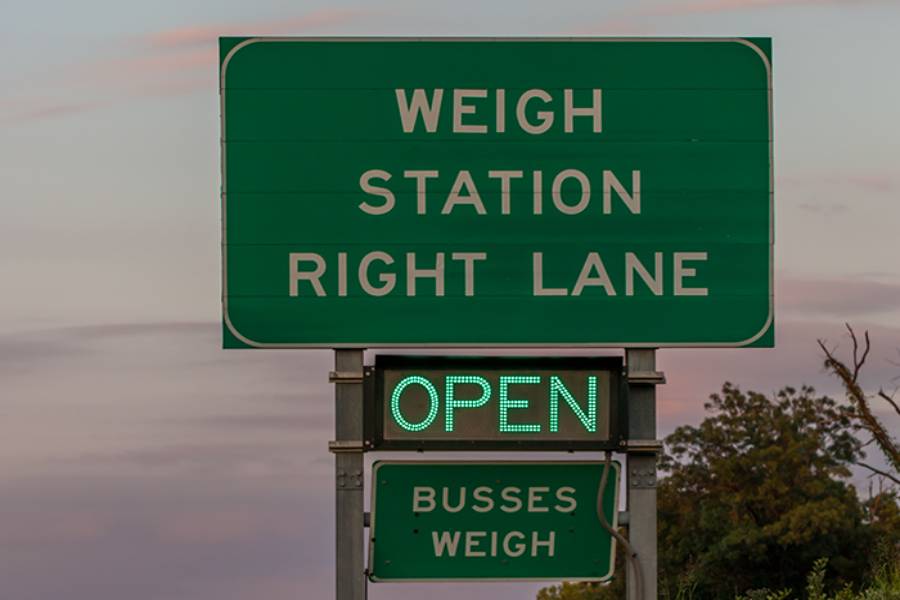Every time a commercial truck pulls into a weigh station, it’s part of a broader system designed to maintain road safety, enforce regulations, and distribute wear and tear across the transportation network. Understanding how this system works is key to navigating it successfully.
Here’s what every professional driver needs to know about weigh stations.
The Purpose of Weigh Stations
The whole point of a weigh station? To stop problems before they start. Overloaded trucks cause real damage to roads, bridges, and safety standards. These stops ensure that it doesn’t happen, keeping both infrastructure and traffic safe.
By checking vehicle weights, inspectors ensure that trucks meet legal limits set by each state, which are typically based on the number of axles, the spacing between them, and the total gross vehicle weight.
Exceeding these limits can result in costly fines, vehicle impoundment, or even suspension of operating privileges.
Beyond weight enforcement, many weigh stations also serve as inspection sites for:
- Vehicle safety and maintenance
- Hours-of-Service compliance
- Cargo securement
- Driver licensing and documentation
These checks help promote safer driving practices and reduce the risk of accidents caused by mechanical failure or driver fatigue.
How Do Weigh Stations Operate?
Located along key freight corridors and state boundaries, weigh stations serve as important inspection points. They’re typically operated by Department of Transportation officials or law enforcement personnel trained specifically in commercial vehicle compliance.
Upon approaching a weigh station, drivers will often see signs indicating whether they must stop or if they’re cleared to bypass. In recent years, many states have implemented electronic screening systems like PrePass or Drivewyze, which allow qualified drivers to skip the scale house based on real-time data.
If a driver is selected for inspection, they’ll pull into a designated lane where a technician will assess the vehicle’s weight using in-motion or static scales. If everything checks out, the driver receives clearance to continue. If not, further inspection or corrective action may be required.
When Are Truckers Required to Stop?
Not all trucks have to pull in at every weigh station. Requirements vary depending on:
- The type of vehicle
- The cargo being transported
- The carrier’s safety rating
- State-specific laws
In general, any commercial vehicle over 10,000 pounds must comply with weigh station rules. Some vehicles, such as those transporting hazardous materials, face additional requirements to stop.
Drivers with a good compliance record and equipped with approved bypass technology may be allowed to skip certain stops and improve efficiency.
Common Mistakes to Avoid
Even experienced drivers can run into issues at weigh stations if they’re not prepared. Common mistakes include:
- Failing to slow down enough to receive a signal from the bypass system.
- Not having important documents ready (such as registration, insurance, and logs).
- Overlooking basic vehicle maintenance before entering an inspection zone.
- Trying to skip a required stop when signs or officers clearly instruct otherwise.
Being aware of these mistakes and preparing accordingly can make weigh station stops less stressful.
Tips for a Smooth Experience
Making it through a weigh station without delays starts with being prepared and following the rules, such as:
- Keep your documents organized and easily accessible.
- Maintain your vehicle regularly to avoid mechanical failures.
- Use bypass programs if you qualify — they can save time and fuel.
- Always follow signage and officer instructions.
- Stay updated on state-specific weight limit requirements, especially when crossing borders.
These small steps can help prevent unnecessary delays and keep your compliance record clean.
Knowing how Department of Transportation weigh stations work is about playing your part in a safer, smoother transportation system for everyone on the road.

